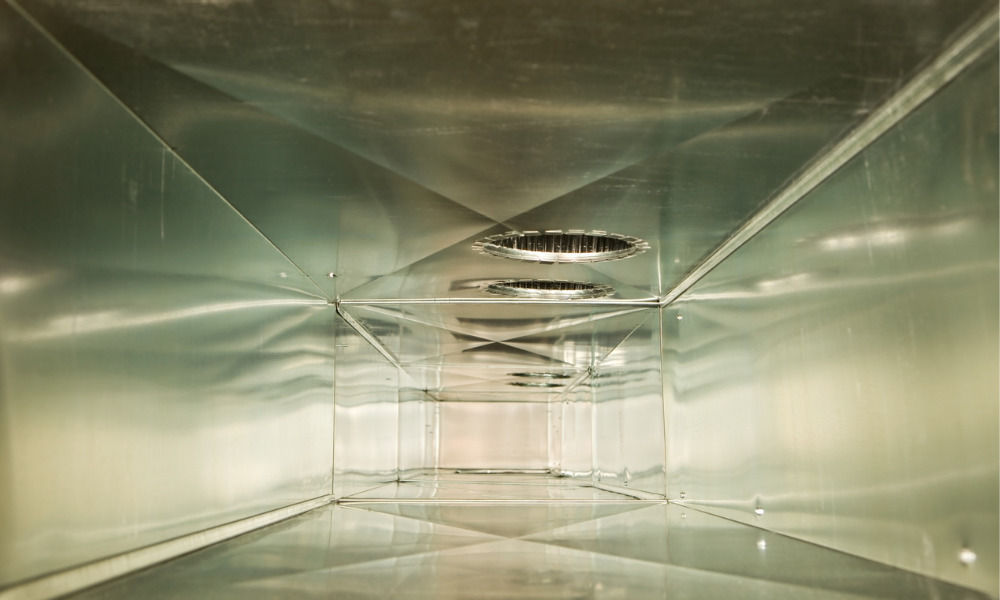Expert sheds light on the importance of air circulation and ventilation in office spaces

With many regions in Ontario entering Stage 3 of re-opening, and with businesses around Canada slowly re-opening in the last month, there have been increasing questions about how to manage new social distancing guidelines, PPE obligations and better sanitization. One issue which has been rarely spotlighted though has been that of air circulation and ventilation.
COS recently spoke with Jean-Simon Venne, CTO & co-founder of BrainBox AI, a company which provides AI tech to help optimize energy consumption in buildings. BrainBox has launched an ‘Airborne Virus Mitigation Program’ to help buildings reduce the potential spread of COVID-19 through buildings’ heating, ventilation and air-conditioning (HVAC) systems.
Venne explains that HVAC control settings in buildings should be much more dynamic, especially at the moment to help better manage buildings and limit the spread of COVID-19. But how exactly has COVID-19 impacted air quality in buildings?
“It’s quite an interesting journey, you see these buildings operating as they have been for the last few years and then one day to the next they’re closing – as a building operator you ask what should I do? Should I shut down everything or keep everything operating on a minimal level?” Says Venne.
He explains that lack of air movement could become – or already is – a big issue. Lack of circulation can mean mushroom problems in air ducts, air flow drying out, etc. These systems were designed to be operating all the time, says Venne, they weren’t designed to be shut down for long periods of time as they are now.
And these issues are not only affecting buildings which have fully shut down, but also office towers where, for example, all floors are empty bar two floors which are extending their working hours because they are essential services, “how do you operate a tower which is partially shut down and partially in operation?” Posits Venne.
Another issue which is becoming more prevalent in the last few weeks as businesses start to open is that people are coming back into work but at a different density. Venne explains that in terms of air flow, you need to re-balance whilst also respecting guidelines. Businesses will need to reconfigure their HVAC systems to have a maximum air flow per hour, and increase fresh air circulation as much as possible. And again, another issue that crops up is that fresh air intake will vary depending on the season.
And these new practices go against traditional configurations, says Venne, “for the last 20 years, to save energy all the buildings were configured to the minimum [settings]. The entire work of the last 20 years to configure at the minimum fresh air intake is out the window.” Now, he says, buildings needs to take in a much fresh air as they can.
Venne explains that “it’s now a mission to have the cleanest air” regardless of the cost.
So with all this said, what exactly are the benefits of increasing ventilation and circulation rates in businesses?
Venne explains that what is starting to be seen on the scientific publication side is that the virus generates a lot of micro-droplets, for example from people infected with the virus talking loudly or sneezing. These droplets can potentially go into the air, and grip onto a dust particle. If these dust particles are sucked in the air system, “they will just go around and do the merry-go-round as they go onto another floor or another zone of the buildings,” he says.
To remedy this, one can configure their HVAC systems to open the fresh air damper (FAD) as much as they can to eject the dust particles outside instead of recirculating them inside, says Venne.
He explains that traditionally, for regular office towers, around seven air changes per hour would be quite enough for an office space. For a hospital this would increase to around 30 changes per hour to help get rid of all bacteria. Regular office towers may not able to get as close to this level of changes per hour, but could increase to maybe 15 or 16 changes per hour for a healthy office space.
Venne explains that tech can be a solution to help handle the pandemic, this is something we have seen for the last few months now and certainly many tech developments can help develop solutions for increasing health and safety in the workplace. This may include monitory tech to ensure that social distancing rules are followed, and density of people is respected. With employees being encouraged or required to do COVID-19 tests, data collection is increasing, and tech can help with that. However, there are obviously questions concerning privacy that accompany these developments.
On a different note, Venne adds that businesses may want to invest in sensors that monitor the quality of dust in the air, which as noted previously can be carriers for micro-droplets released in the air.
With a second COVID-19 a possibility in the coming months, businesses need to ensure that they are optimally planning to protect the health and safety of their workers.





